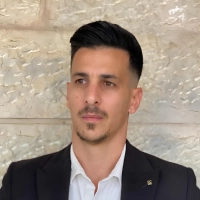How Have Hiring Practices Contributed to Building a Strong Leadership Team?
In the quest to forge a formidable leadership team, we've gathered insights from Founders and CEOs on innovative hiring practices. From implementing a hiring scorecard to prioritizing cultural fit and mentorship, discover the eight transformative strategies these leaders have successfully employed.
- Implement a Hiring Scorecard
- Incorporate Gamification in Training
- Quantify Candidate Fit with Core Values
- Use Real-World Leadership Assessments
- Conduct Values-Based Interviews
- Employ Behavioral Interviewing Techniques
- Assess Leadership Competencies Structurally
- Prioritize Cultural Fit and Mentorship
Implement a Hiring Scorecard
Using a hiring scorecard to ensure every member of the hiring committee is aligned is crucial. Our job isn't to sell someone on working with us; it's to achieve alignment within the team. This is where many struggle in the executive hiring process, often getting distracted by shiny objects.
Leveraging the power of a hiring scorecard, we reduce the margin for hiring error and minimize the risk of being swayed by superficial qualities. If we can't dig below the surface, we can't validate how the candidate aligns with the role and work required to achieve success together.
The stories we tell ourselves during the hiring process aren't always rooted in reality. A hiring scorecard is a structured tool that outlines the specific skills, experiences, and qualities needed for the role. It helps us objectively evaluate candidates against these criteria, ensuring a fair and thorough assessment.
Why we can't live without it:
Clarity and Alignment: It ensures everyone on the hiring committee is on the same page about what is needed for the role.
Objective Evaluation: Reduces bias by focusing on predefined criteria rather than gut feelings or personal preferences.
Consistency: Every candidate is evaluated on the same standards, making the process fairer and more transparent.
Focused Interviews: Guides interview questions and discussions, keeping the focus on what's truly important for the role.
When we use the hiring scorecard, we go from hope to confidence. We're not just filling a position—we're making an informed, strategic decision that aligns with our goals and values. We're minimizing risk, avoiding pitfalls, and steering clear of chasing after shiny objects. It's the same thing we do for our customers as we help them hire their GTM executives.

Incorporate Gamification in Training
Strong leaders are born out of facing challenging situations together, where they witness their team's strengths and weaknesses and change course accordingly. Realizing that these situations are not always required to be connected to workplace problems, we began including game-like elements in our leadership training programs.
Soon enough, our leaders were honing their problem-solving and collaborative skills with their peers, and even adapting to situations to accommodate or support their team. Yet another advantage was that, despite the provision of an active feedback mechanism, we found this feature rarely kicking in. Instead, the lessons learned from one another proved far more effective than any coaching.
Another aha moment was how gamification scenarios can be simple, creative, and non-technical too. Some leadership mantras can be picked up even while recreating everyday situations; you don't always need an expensive gamification platform to lead the way.

Quantify Candidate Fit with Core Values
The most important change I've implemented to my hiring practice in my previous companies (and with my clients) is to quantify each candidate's fit for the role. It transformed our hiring and allowed us to build an extremely strong and unified team.
The purpose is to ensure that each candidate is equally assessed on their skill set for the role and adherence to each of our company's core values. I do this by ensuring every candidate is asked the same questions and that questions are determined to uncover skill set and values.
Each element is then rated on a spreadsheet that calculates their total fit for the job.
I always have at least three people interview each potential candidate so that we can average out the ratings for greater accuracy.
As it turns out, the methodology works! I tested it with my own companies and now implement it with clients of all sizes, from start-up to enterprise level.

Use Real-World Leadership Assessments
We started integrating a structured leadership assessment into our hiring process, focusing on candidates' ability to lead through real-world scenarios. By using case studies and simulation exercises, we gain deeper insights into their decision-making and problem-solving skills. This method has proven effective in identifying individuals who can thrive in leadership roles and drive our company's strategic goals. It has also helped us align new leaders with our organizational culture and values more effectively. The result is a more robust and dynamic leadership team that can adapt to challenges and inspire others.

Conduct Values-Based Interviews
One hiring practice that has significantly contributed to building a strong leadership team is implementing a "values-based interview" process.
In addition to assessing technical skills and experience, we focus on understanding how well candidates align with our company's core values. For instance, during interviews, we present real-life scenarios that reflect our organizational culture and ask candidates how they would handle them. This helps us gauge not only their problem-solving abilities but also their alignment with values like collaboration, integrity, and innovation.
For example, we once interviewed a candidate for a leadership role who demonstrated strong technical skills. However, during the values-based interview, it became clear that their approach to teamwork and conflict resolution did not align with our company's collaborative culture. This insight was crucial, as it helped us avoid a potential mismatch that could have affected team dynamics.
This practice ensures that new hires not only bring the right skills but also share the values that are vital for fostering a cohesive and motivated leadership team. It has been instrumental in building a team that works well together and drives the company forward in a unified direction.

Employ Behavioral Interviewing Techniques
I emphasize behavioral interviewing as a tactic to build a strong team. This method focuses on understanding how candidates have handled specific situations in the past, which can help us predict their future performance in similar scenarios. We ask candidates questions like, "Can you describe a time when you led a team through a challenging project?" These types of questions give us valuable insight into their leadership style, emotional intelligence, and ability to handle high-pressure situations.

Assess Leadership Competencies Structurally
One hiring practice that has significantly contributed to building a strong leadership team at Alpas Wellness is the implementation of a structured behavioral interview process focused on leadership competencies. This practice involves assessing candidates not only on their technical skills but also on key leadership traits such as emotional intelligence, decision-making, and team management.
For instance, during our hiring process for a new department head, we incorporated scenario-based questions that required candidates to demonstrate how they would handle specific leadership challenges. One question involved a hypothetical situation where they had to resolve a conflict between team members while ensuring project deadlines were met. This approach allowed us to see their problem-solving skills, empathy, and ability to maintain team cohesion under pressure.
As a result, we were able to identify and select individuals who not only had the necessary expertise but also the leadership qualities that align with our organizational values. This structured approach has led to a more cohesive and effective leadership team, capable of driving the company forward while fostering a positive work culture.

Prioritize Cultural Fit and Mentorship
One hiring practice that has contributed to building a strong leadership team at RecurPost is our emphasis on cultural fit alongside professional expertise. We prioritize candidates who not only have the requisite skills but also align with our core values of collaboration, innovation, and integrity. This approach has helped us build a cohesive and dynamic leadership team that drives our vision forward.
We've also implemented a mentorship program where new leaders are paired with seasoned executives from day one. This mentorship fosters knowledge transfer and accelerates the integration of new hires into our leadership framework. Through regular check-ins and feedback loops, we've created a supportive environment that encourages continuous learning and development.


